|
|
|
Sort Order |
|
|
|
Items / Page
|
|
|
|
|
|
|
| Srl | Item |
| 1 |
ID:
152020
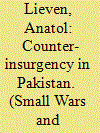

|
|
|
|
|
| Summary/Abstract |
The Pakistani security forces have won their fight against the insurgency of the Pakistani Taliban, though terrorism will remain a serious problem for the foreseeable future. Victory was won not chiefly on the basis of new tactics, but of the recovery of legitimacy for the campaign among the population and the armed forces. This occurred when the war came to be seen as one waged not in the interests of the USA, but for the defence of Pakistan. In Balochistan, the nationalist insurgency has been different from and weaker than that of the Taliban—but may prove longer lasting. Military tactics in Balochistan have closely resembled those of the British Raj, and have been based with some success on fomenting tribal divisions and co-opting tribal elites.
|
|
|
|
|
|
|
|
|
|
|
|
|
|
|
|
| 2 |
ID:
167847
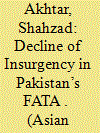

|
|
|
|
|
| Summary/Abstract |
The Tehrik-i-Taliban Pakistan insurgency seriously challenged the Pakistani government’s writ of state in FATA from 2004 to 2008. However, by 2017, the insurgency collapsed. This paper argues that Pakistan’s counterinsurgency campaign after 2009 caused the decline of the Taliban insurgency by targeting the TTP through a true counterinsurgency operation, rather than the conventional warfare tactics used earlier. This counterinsurgency shift involved a more judicious use of force, rather than simply more force, and deployed both enemy-centric and population-centric approaches, but with a marked emphasis on the former over the latter.
|
|
|
|
|
|
|
|
|
|
|
|
|
|
|
|
| 3 |
ID:
111280
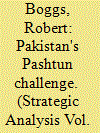

|
|
|
|
|
| Publication |
2012.
|
| Summary/Abstract |
The Pashtun populations of Afghanistan and Pakistan have long been a source of bilateral contention, with each government inciting Pashtun tribals against the other. Now that the majority of Pashtuns live in Pakistan, Islamabad is using its Pashtun connections to project influence into Afghanistan. As a result, both Afghanistan and Pakistan are threatened by runaway Pashtun militancy. Peace and stability in both countries will be impossible until political reforms have been implemented in the Federally Administered Tribal Areas (FATA) of Pakistan. Reforms, with international support, would undermine radical networks and could be leveraged to improve Afghanistan-Pakistan relations.
|
|
|
|
|
|
|
|
|
|
|
|
|
|
|
|
| 4 |
ID:
107898
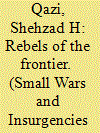

|
|
|
|
|
| Publication |
2011.
|
| Summary/Abstract |
The Pakistani Taliban, factionalized into some 40 groups, form a decentralized insurgent movement, often characterized by infighting, divergent motivations, and a shifting web of alliances. The Pakistani Taliban remain little understood because most scholars have avoided a serious treatment of the insurgent movement and instead focused on analyzing the geopolitics of the region and Pakistan's 'double game'. This article seeks to fill this gap by dissecting the movement through selected theories of organization and mobilization. First, I explain the various dimensions of the conflict and the origins of the insurgency. Next, I discuss the Pakistani Taliban's political organization, categorizing it as composed of various warlord regimes. I further list the Taliban's component groups and numerical strength and chart the leadership structure. Lastly, I analyze insurgent recruitment strategies, accounting for the role of selective incentives, coercion, and genuine grievances.
|
|
|
|
|
|
|
|
|
|
|
|
|
|
|
|
| 5 |
ID:
091488
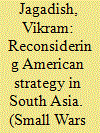

|
|
|
|
|
| Publication |
2009.
|
| Summary/Abstract |
Over seven years after the 11 September 2001 attacks on the United States, Afghanistan is again at the forefront of the headlines, faced with a brutal insurgency and a resurgent Taliban. Many scholars and policymakers attribute the instability in Afghanistan to a terrorist sanctuary in the neighboring Federally Administered Tribal Areas (FATA). Pakistan has attempted to eliminate this sanctuary through negotiation and armed force. This paper argues that Pakistani strategy has failed to achieve its desired results because of local tribal norms, the weak nature of previous agreements, military units ill-equipped for a counterinsurgency and counterterrorism role, as well as ideological fissures in the Pakistani establishment. Afterward, the paper argues that the United States and Coalition forces should pursue their strategy remaining cognizant of local tribal norms, step up training efforts for Pakistani forces, promote development of the tribal areas, and cultivate options for eliminating the FATA sanctuary through covert means.
|
|
|
|
|
|
|
|
|
|
|
|
|
|
|
|
|
|
|
|
|